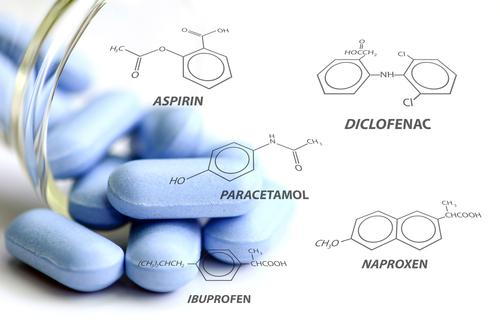
Did you know that a recent study in the British Medical Journal found that there is a 50% increase in risk of heart attack for 8 to 30 days after taking non-steroidal anti-inflammatory drugs.
According to Medicalbag.com over the last decade evidence has been mounting of increased risk of myocardial infarction(MI) which is better known as heart attack with the use of non-steroidal anti-inflammatory drugs. But until recently how soon after taking the drugs and if dosage made a difference has been unknown.
If a patient took one dose for a backache does that increase the risk, and does the risk increase if they are taken for a longer period? This study answers those questions.
Risk increased for MI with the use of all NSAIDS including cox-2 inhibitors and began immediately after exposure often within 1 to 7 days. Higher dosages resulted in a 20-50% increase in risk over the 8 to 30 days following its use, with possible increases of 75% for ibuprofen and naproxen. High dose was defined as 1200mg per day of ibuprofen, 750 mg per day of naproxen, 200mg of celecoxib, and 25mg of rofecoxib.
After one month of use the risk does not continue to climb. Diclofenac may be the exception to that but more data is required. The risk decreased over time when the medications were stopped. Of all the NSAIDS rofecoxib had the highest risk, which may be why the association of MI with NSAIDS was first associated with its study.
This is the largest study done on this topic with 446,763 participants and 61,460 myocardial infarctions. This decreases the options for medical doctors when deciding treatment options for their patients with pain. Considering the growing opioid addiction problem their clinical decisions are under more scrutiny. The fact that some of these NSAIDS such as ibuprofen (Advil and Motrin), and naproxen (Aleve) are sold over the counter and that when taken as recommended are considered high dosage is very troubling.
What are some possible solutions to this problem?
1. Increase the use of physical solutions to the treatment of pain such as physical and therapy and Chiropractic. As a Doctor of Chiropractic it has always saddened me when people say that they get the “normal headaches” and just take a pill for the pain. For starters, there is no such thing as a “normal headache” pain is your body telling you something is wrong. There is often a physical component or problem in your body that results in the pain, it is not a lack of Advil. When I go to businesses to teach ergonomics I have seen people with 500 count bottles of ibuprofen on their desk for the pain they get from sitting in front of a computer all day. They do not realize that they can live without pain if they address the physical problem in their body rather than treat the symptom. For example, most headaches actually come from a problem in the neck.
2. Increase the use of alternative solutions to inflammation such as supplements and diet to decrease the need for NSAIDS. Doctors of Chiropractic are the only doctors trained to treat the mechanical source of the pain and the effective use of supplements to enhance our treatments. The supplement field is complex and ever changing and you want someone familiar with the safe and effective use of these products. You may have heard that fish oil is an anti-inflammatory but how much should you take, what should you look for in a fish oil, what should you take with it to improve joint health and other questions like these will determine if you get the results you need. You can’t just rely on the advice given at the health food store. In my office, I actually ask manufacturers of the products I sell for third party testing to prove that what they say on the bottle is actually in the bottle.
3. I have for years told patients that call me with flare-ups of pain to start with ice. Ice is incredibly effective as a pain reliever and very safe. Contrast therapy is using ice and heat together one after the other and is also very safe and effective. Unfortunately, most people think to use NSAIDS rather than ice right after an injury.
If you are confused or concerned about how to deal with your pain try a free consultation to learn how you can use a safer approach to less pain in your life. Just click here.
